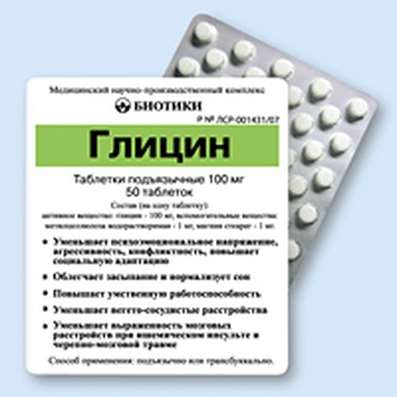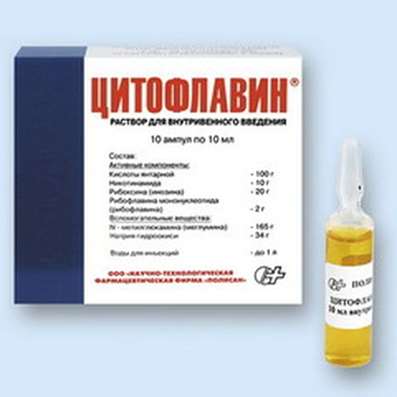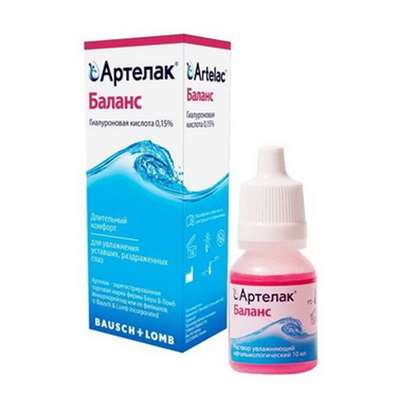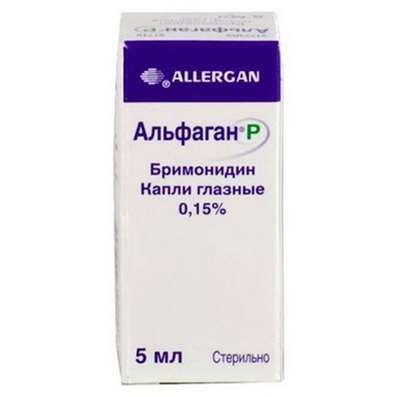Insulin in sport
09 Dec 2016
In 1889 in experiments on animals it was established that excision of a pancreas causes a sugar mocheiznurenie. In 1901 L. Sobolev experimentally confirmed existence in a pancreas of special substance and formulated the principles of receiving insulin. In 1921 F. G. Banting and the P. X. Best received the extract eliminating diabetes mellitus symptoms from a pancreas. In 1925 from a pancreas crystalline protein with properties of insulin hormone was isolated, and its industrial production for medical needs was the same year begun. For 1945 — 1947 the chemical structure and molecular mass of insulin was established. In 1963 synthesis of this hormone was carried out. For one unit actions (UA) take specific activity of 0,04082 mg of crystalline insulin (standard). Now about 4% of the population of industrially developed countries is forced to enter to themselves insulin according to vital indications.
Physiology
Insulin is the albuminous hormone consisting of two polypeptide chains And yes In, the containing respectively 21 and 30 amino acids bridged between themselves two disulfide communications. The molecular mass of a monomer of insulin makes 5733,5. Insulin by β-cells of the insular device of Langergans of a pancreas and, perhaps, parotid sialadens is synthesized. The step proteolysis leads to formation of pro-insulin. After formation of a disulfide ponticulus the binding peptide then biologically active insulin is formed is split off.
The pancreas of the healthy person contains an equivalent of 200 PIECES of insulin. An insulin secretion regulation — the complex process including stimulators (a glucose, amino acids, free fatty acids, enterogormona, etc.) which action amplifies calcium ions, and inhibitors (somatostatin, Prostaglandinums, adrenaline and insulin). Besides, impact is exerted by the autonomic nervous system: sympathetic — braking, parasympathetic — stimulating. Normal secretion of insulin includes two components: basal, interfering a hyper catabolism on an empty stomach, and stimulated meal. The insulin released from a pancreas circulates in a blood in free and in the form bound to proteins.
Free hormone stimulates assimilation of a glucose with both muscular, and fatty tissue, and the connected hormone affects specifically only fatty tissue. The inactivation of insulin occurs in a liver and in others the insulin organs and tissues.
Mechanisms of effect of insulin
Effects of insulin
Insulin possesses an important and many-sided role of a biocatalyst of processes of a metabolism. It promotes transition of glucose from a blood in a tissue and to its transformation in a liver and sceletal muscles into a glycogen. Insulin increases permeability of biological membranes for a glucose, amino acids, ions and oxygen and stimulates their consumption with tissues. Under the influence of insulin processes of oxidizing phosphorylation owing to activation of a cycle of tricarboxylic acids and hexokinase reaction which is the first and key stage of a metabolism of a glucose amplify. In tissues the glucose contains mainly in interstitial liquid, and a glucohexokinase in cells. Increasing permeability of cellular membranes, insulin promotes penetration of glucose into cytoplasma of cells where it is affected by enzyme. It inhibits activity of glyukozo-6-phosphatase which catalyzes glycogenolysis.
Insulin strengthens anabolic effects in cells: enlarges synthesis of proteins, lipids and nucleic acids, activates oxidation of fatty acids and influences body height of an organism. As an anticatabolic factor it brakes glyconeogenesis and interferes with degidrogenirovaniye of free fatty acids and education of precursors of glucose.
At deficiency of insulin or depression of sensitivity of tissues to endogenic hormone the organism loses ability to consume a glucose and the diabetes mellitus develops. The leading symptoms of a diabetes mellitus are thirst and polyuria (6 — 10 l a day), a hyperglycemia (6.7 mmol-l "1 and above, defined on an empty stomach) and glucosuria (10 — 12%), depression of maintenance of a glycogen in a liver and muscles, disturbance of exchange of proteins, incomplete oxidation of fats with rising of their contents in a blood (lipidemiya) and a metabolic acidosis (ketonemiya). At a serious sugar diabetic coma is possible. At the low level of active insulin in a blood concentration of a glucose, free fatty acids and amino acids, i.e. the substances playing a part in a pathogenesis of a diabetic angiopatiya and an arteriosclerosis is enlarged.
Diabetes mellitus
Proceeding from a pathogenesis and a clinical picture, the diabetes mellitus is sectioned into two types: type I — insulin-dependent and type II — non-insulin-dependent.
Include patients with primary lesion of beta cells of a pancreas leading to insulin synthesis depression in the first type. This form occurs mainly at children and persons of young age.
Depression of sensitivity of fabric receptors to endogenic insulin owing to disturbance of metabolic processes, and also disturbance of neurohumoral regulation of secretion of the insular device of a pancreas is the cornerstone of a diabetes mellitus of the second type. The II type occurs at persons of advanced and middle age, often is followed by an obesity.
Drugs of insulin
For a pharmacotherapy of a diabetes mellitus of the I type use insulin drugs. At a diabetes mellitus of the II type use synthetic glucose-lowering drugs, in certain cases supplement their action with administration of insulin. The insulin received from a pancreas of cattle, pigs and whales provides rather short medical effect. Adding to insulin the protamine, and also Zincum stabilizing low-molecular white (0,08 mg on 1 ml of drug), the phosphatic or acetate buffer or a polymeric basis (a low-molecular polyvinylpyrolidone), drugs of the prolonged action (depot drugs) receive.
The most short-term action insulin for injections (6 h), average duration — suspension Zincum-insulin (amorphous), and the most long — framed on a polymeric basis possesses (30 — 36 h).
The main indication to use of drugs of insulin in clinic is the diabetes mellitus. Doses of insulin establish individually, depending on disease severity, a condition of the patient and content of Saccharum in urine (1 PIECE of hormone on 2 — 5 g of Saccharum emitted with urine).
Insulins of short action apply to treatment of a diabetic coma. Drugs of depot insulin prescribe so that the maximum hypoglycemic effect coincided on time with the period of the greatest glucosuria and hyperglycemia. These drugs are administered in the morning, on an empty stomach. Small doses of insulin (5 — 8 PIECES) as anabolic hormone apply at cachexia, furunculosis, toxicosis of pregnant women, at a peptic ulcer, hepatitis and other diseases in combination with the strengthened albuminous and carbohydrate delivery and introduction of a glucose. In psychiatric practice insulin is applied to development of hypoglycemic shock at some forms of schizophrenia.
Insulin in sport
Use of insulin in sport as dope is caused by the fact that this hormone is characterized by potent anabolic and anticatabolic effect concerning protein, carbohydrate and fatty metabolism. At introduction of rather high dose of insulin to an organism from the outside there is an expressed depression of maintenance of a glucose in a blood and protective reaction — intensifying of emission of hormone of body height which promotes rise in level of Saccharum in a blood joins. In certain cases the level of hormone of body height can increase by 5 — 7 times. It leads to sharp intensifying of an anabolism. Besides that insulin in itself after an injection provokes body height hormone emission, also the fact that it also repeatedly strengthens its action, as well as anabolic steroids is incontestably proved. Becomes clear why in recent years in sport the combination Somatotropinum + insulin + anabolic steroids became so popular. Please pay attention to Prostalamin.
Except insulin level, sensitivity of tissues to this substance is of very great importance. It is known that simple Saccharum shouldn't be present at a diet of the qualified bodybuilder. It is especially important as many people have problems with an insulin metabolism, without suspecting anything about it. Most of body builders doesn't think of it, believing that as they aren't sick with a diabetes mellitus, it isn't important for them. At the same time much of them it is unclear why they can't get rid of the latest and often decisive drops of subcutaneous fat. The metabolic disturbance known as "insulinic resistance", or insusceptibility to insulin which is shown that the organism develops enough insulin in response to the increased glucose levels in a blood can be the cause, but doesn't react properly to insulin. This disorder became so widespread that experts from the Center of control over diseases in Atlanta (USA) assume that one of each four Americans.
Bodybuilders who happened to get to this category have great difficulties with achievement of relief on rich with carbohydrates and diets poor in fats which are almost "law" for most of the competing body builders. The sweet and containing Amylum carbohydrate foodstuff, similar to rice, potatoes and macaroni, usually causes high insulinic reaction. Sometimes they force to be released more insulin, than the person, refractory to it, can utilize.
Excess of this hormone is perceived by an organism as a toxic factor. To protect themselves, the organism transforms excess of carbohydrate calories to triatsilglitserola which then stock up as fat. It can explain why the rich carbohydrates/poor do by fat of a diet some bodybuilders "fat".
Use of insulin in sport can be reasonable and effective only at control of level of a glucose in a blood, and also at concentration of the S-peptide in it. Rational and physiologically reasonable use only of drugs of short action is not beyond physiological norms. One of the safest drugs of insulin is Humulin R of production of Eli Lilly (USA). He quickly begins to act and has the shortest duration of action. Other types of insulin remain active during longer period of time and can bring the user to a hypoglycemia state absolutely unexpectedly.
In sport around insulin heated arguments continue to be conducted. There is no consensus concerning in what dosages with what frequency rate and as longly it should be applied. As endogenic secretion of insulin can be regulated substantially by means of a diet, exercises and nutritional supplements, we provide several rules which knowledge will help to control better the level of insulin and Saccharum in a blood that will increase efficiency of training.
Insulin for a set of muscle bulk
In strength sports several techniques of use of insulin are applied to a set of muscle bulk. There are super effective, but extremely dangerous and demanding strict medical control ways of creation of a medicinal hypoglycemia with the subsequent its gradual stopping, and also rather safe, but too effective techniques of use of small doses for rising of comprehensibility of foodstuff, optimization of synthesis of a glycogen and intracellular protein. The first group of techniques for a set of weight means acceptance on an empty stomach average and the larger, but surely individually picked up doses of insulin of short action, the second group includes insulinic "subsplittings" in small doses (3 — 6 PIECES) immediately after meal. Despite the expressed positive effect of insulin on body height of muscle bulk, we don't recommend to experiment with doses more than 6 PIECES without strict medical control. Individual reaction to insulin varies in very wide limits — from a mild or average hypoglycemia till the sudden beginning of development of a hypoglycemic coma which can kill the athlete not in several years, and several hours later after an injection.
Therefore before the athlete begins to use insulin for a set of weight, he has to know about warning signs and signs of a hypoglycemia. The list of signs which can indicate the beginning of a hypoglycemia, following: hunger, the sleepiness, turbid vision, depressive mood, giddiness, a diaphoresis, strong heartbeat pricking pain in arms, legs on labiums or tongue, a photophobia, disability to concentrate, a headache, an uneasy dream, concern, a delirium, irritability. If the athlete felt one of these warning signs, he has to eat immediately food or carbohydrate drink containing Saccharum. It will reduce a hypoglycemia and will prevent its negative consequences. But in stopping of a hypoglycemia there is a small nuance: in order that emission of Somatotropinum didn't stop, it is impossible to stop a hypoglycemia completely, experienced athletes are able to accept so competently carbohydrates that they manage to support a mild hypoglycemia throughout all time of effect of drug, without allowing its transition in serious a form. The expressed hypoglycemia — a dangerous state which can even demand a medical intervention. These signs include a disorientation, an attack, unconsciousness. Once again we warn: the serious hyperglycemia can as it was mentioned above, lead to a lethal outcome.
Insulin is used in sport variously. Most of athletes apply insulin to augmentation of muscle bulk immediately after the training in addition to lower Saccharum level in a blood. The used dosages usually 1-2 PIECES on 5 — 10 kg of body weight. Novice users have to begin with a low dosage and gradually enlarge it: for example, at first accept 2 PIECES, then enlarge a dosage by 2 PIECES at each next training; gradually bring it to 20 — 40 PIECES a day. It allows to define an optimum dosage. Dosages of insulin can differ considerably depending on sensitivity of athletes to insulin and uses of other drugs by them. The athletes using STG and hormone of a thyroid gland have to enlarge an insulin dose. The drugs of insulin have to be administered subcutaneously only by means of the insulinic syringe. Use of any other syringe, except insulinic, inadmissibly as in this case it is difficult to calculate the correct dosage.
Hypodermic administrations of insulin usually do, cliping a skin fold in an abdominal cavity. To accelerate effect of insulin, the drug is administered in a hip or a triceps. Most of athletes wear insulin in a bag which is left in the hall (insulin has to be cooled, and not heat up in a bag!). Immediately after the training occupation the athlete enters insulin. Within the next 15 min. it has to take energy carbohydrate drink or eat something sweet. The athlete has to consume, at least, 10 g of carbohydrates on each unit of the entered insulin. Approximately in an hour after insulin injection, most of athletes eat food (rich with protein) or drink protein cocktail. Without it blood glucose level strongly goes down and the athlete can enter a condition of the expressed hypoglycemia. Many athletes become somnolent after insulin injection. It can be a hypoglycemia sign, in that case the athlete needs to consume larger amount of carbohydrates and to avoid a temptation to have a sleep during 4 h as insulin can have peak result during a dream. Earlier mentioned Humulin R usually remains the active 4 h with peak approximately in 2 h after injection.
Many athletes prefer to enter insulin in 30 min. until the end of the training and then take carbohydrate drink immediately after the training. This use will make insulin more effective when providing muscles with a glycogen, but it will also enlarge danger of a hypoglycemia. Some athletes even enter several units before training to improve a rating. This practice is extremely dangerous and is applied only by experienced athletes. At last, some athletes like to enter insulin after awakening in the morning. After introduction they consume carbohydrate drink and then, within an hour, have breakfast. Some athletes find this application of insulin very favorable to weight augmentation while others note owing to it a tendency of augmentation of amount of fat. Use of insulin can't be revealed during a doping test.
Side effects
At use of drugs of insulin it is necessary to consider also a possibility of implication of the following collateral reactions:
- serious hypoglycemia which signs are delicacy, giddiness, nausea, cold sweat, tachycardia, a tremor which often are followed by a pathological pavor of death;
- hypoglycemic coma;
- allergic reactions to insulin (up to anaphylactic shock), especially on badly purified drugs of animal origin;
- development of antibodies to insulin with insulin resistance development (meets extremely seldom);
- local lipoatrophias and infectious complications after injections;
- disturbance of accommodation and insulinic edema.
- At the hypoglycemia which arose owing to an insulin over dosage prescribe Saccharum or sweet tea, and at serious condition (insulinic shock) pour intravenously in 50 ml of 40% glucose solution.
At a collapse enter under a skin 1 ml of 0.1% Adrenalinum hydrochloricum solution.
If the athlete does everything correctly and sensitively listens to the reactions to this drug, then probability of implication of side effects is very small. It is very important to do breaks in insulin reception that the organism didn't get used to exogenous insulin and didn't reduce in reply development own (it is necessary to remember that constant and long injections can lead to a full or partial atrophy of a pancreas over time). That it occurred, administration of drug is carried out according to the following scheme: 2 months reception, 3 — 4 months break. Such practice of use of drug almost completely excludes risk of development of adverse changes of function and furthermore — structures of a pancreas.
Combined courses
There are also substances exponentiating effect of insulin. Adaptogens, Niacinum concern to them, it is lame, Vanadylum sulfate, Alpha lipoic acid (lipoic acid), anabolic steroids. Somatotropinum, a glucagon, adrenaline, hormones of a thyroid gland, glucocorticoids and separate vitamins concern to agents somatostanin. All this demonstrates that it is necessary to build pharmacological support of athletes elaborately. Use of insulin for realization of goals can be no such simple business. It must be kept in mind that the wrong use of insulin for acceleration of construction of muscle bulk can cause opposite effect — the accelerated building of fat deposits (lipogenesis).
So, various techniques of a manipulation the level of insulin and Saccharum in a blood at competent and reasonable use are an effective remedy of restoration and rising of sports effectiveness. At the same time and also physiologically competent use of these agents is represented to the most important difficult methodically, tactically.
The ban on their use, from our point of view, is ill-founded as in the conditions of strictly medical control they can bring a certain benefit. For this purpose it is necessary to conduct scientific research in this direction. At the same time in the presence of the ban on use of drugs of insulin in sport, athletes and sports doctors should abstain from its use.

 Cart
Cart





